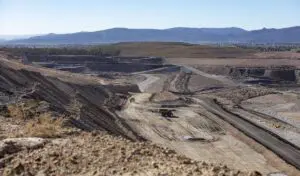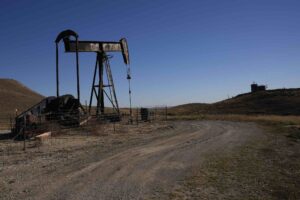The Queensland Labor government has kicked off its large-scale energy storage auction, calling for early registration of companies wishing to tender for the installation of up to 100MW of energy storage before 2020, alongside 400MW of new solar and wind farms.

The Renewables 400 auction was officially launched on Monday, as a key plank of the Palaszczuk government’s Powering Queensland Plan – a $1.6 billion scheme, first unveiled in June, to help the state meet its 50 per cent renewable energy target by 2030.
Speaking from the Brisbane factory of lead-acid battery maker Century Batteries, Premier Annastacia Palaszczuk said the plan included a “specific process” to secure up to 100MW of energy storage before 2020.
Century Batteries – which is expected to bid in the energy storage auction – today announced plans to further expand its factory in Carole Park, south-west Brisbane, producing the first sealed maintenance free (SMF) lead-acid battery designed and built in Australia.
Visiting the manufacturing facility today, the Premier said she welcomed Century Batteries’ interest in key initiatives of her Government, including an upcoming reverse auction for 100 megawatts of energy storage and its active work with government-owned corporations and emergency services to supply critical power.
“Energy storage will play an important role in the transition to higher levels of renewable energy and this process will support the accelerated deployment of this important technology,” the Premier said.
Treasurer and Acting Energy Minister Curtis Pitt said that under the reverse auction process, companies would bid for Queensland government support for both renewable generation and storage projects – most of which would be situated in the state’s regions.
“This early registration provides adequate time to ensure they are ready to hit the ground running when the process opens,” Minister Pitt said.
“Successful bidders will be awarded financial contracts with the government for some or all of the electricity they generate which will provide them with long-term certainty allowing them to secure the financing required to deliver their project.
“The ‘reverse’ nature of the auction process means that companies are encouraged to bid for the lowest price necessary to support their project.”
Pitt said successful bidders would be chosen not only on price but also with priority given to projects that supported local jobs and businesses, and “with a view to creating a diverse mix of renewable energy generation and storage to support a secure, reliable and affordable supply of electricity into the future.”
In this way, he said, the Palaszczuk government hoped to continue the “unprecedented momentum” in new renewable energy investment and energy storage that had finally begun to gather across the state.
As Giles Parkinson has pointed out in this story today, up until now, Queensland – Australia’s “Sunshine State” – has had very little large-scale renewable energy to speak of.
But momentum is indeed gathering. According to Pitt, the past 18 months has seen 17 new projects financially committed in Queensland, including $2.3 billion of investment and 2,200 construction jobs.
“Energy is undergoing a transformational change in the way it is generated, transported and used and as a government you have to plan for that and not stick your head in the sand and pretend our only option is expensive coal-fired power stations anymore,” he said on Monday.
“We’re committed to transitioning to a clean energy future in a responsible, achievable and sustainable way – with affordability always front and centre.”
For more information on the 400MW Reverse Auction, or to access the register of interest visit www.dews.qld.gov.au.









